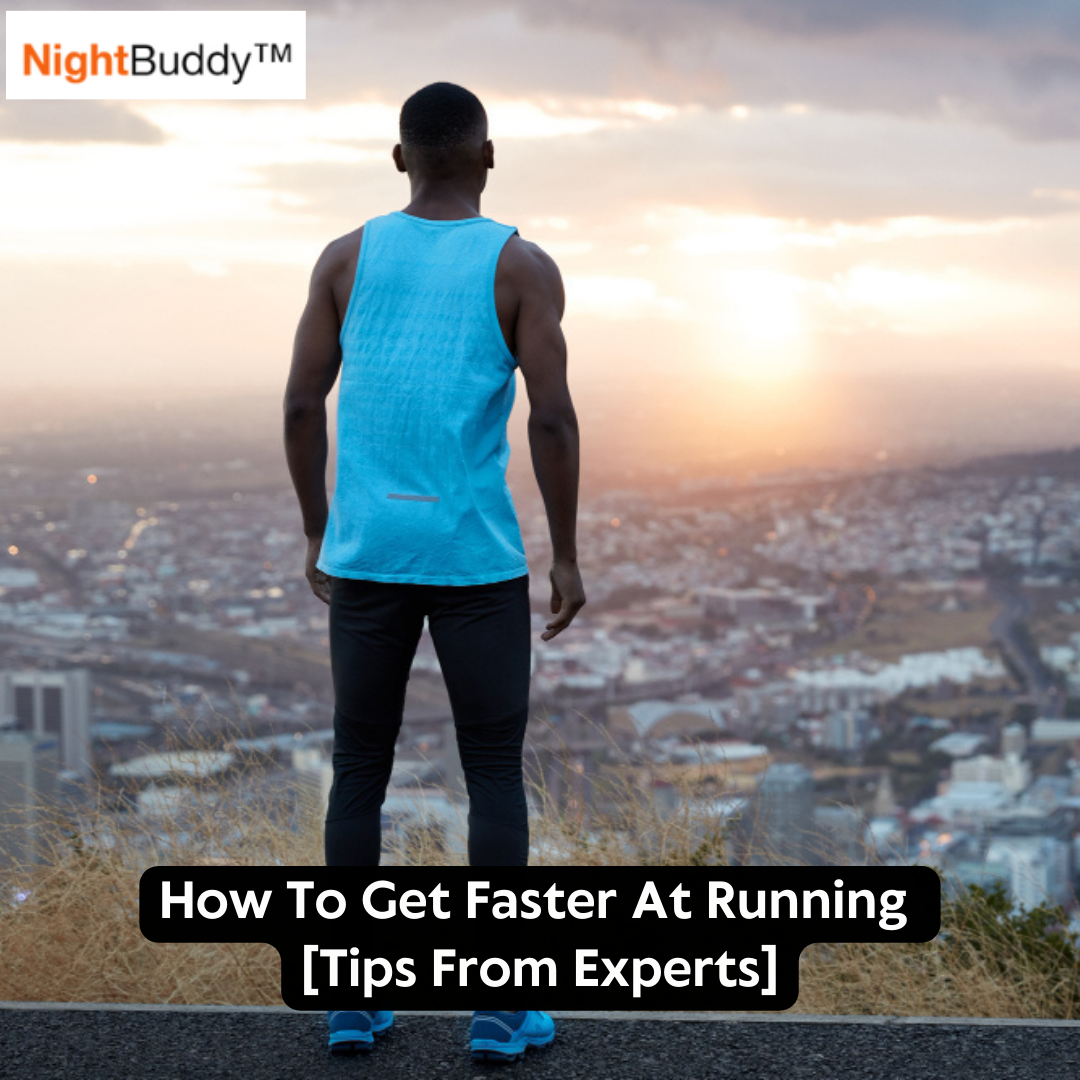You can get faster at running by benefiting from the best running technique. If your running pace had been consistent for some time, you could get stuck in a plateau. No runner wants a poor performance.. Right?
You have to work on your endurance. Stretch it a bit so that you'll be up to running faster without feeling worn out for those big races!
Give yourself more push, so to speak. This way, you'll learn to achieve new performance goals. Discover your strengths- how far and how fast you can go and stay motivated.
Read also; How to Stay Safe and Visible When Running at Night
You may have to go on a slower pace to begin with, but interval training is a good start. That's when you can go at a faster pace while avoiding the risk of injury. Below are tips for your training plan on how to run faster.
7 Workout Tips On How To Run Faster
#1 Test how it is to pick up on your pace
How does it feel to run at a quicker pace? This is when you start on your speed workouts. As you work to become a faster runner, test how it feels to have bursts of faster runs.
While doing this as one of your training techniques, balance your breathing, especially because it can make you tired.
When you experience muscular fatigue, learn to distinguish discomfort from pain. If it's getting painful, you should slow down.
Adjust your race pace needs by adapting to the sensation of running faster. You ought to get out of your comfort zone and inculcate mental and physical endurance.
#2 Increase your training schedule
Do you tend to run once a week and do workouts on other days? You need to step up your mileage by swapping those days. It's when you'll be able to notice progress in your pace as a distance runner.
If you want to run faster, you should train for two to three days a week at the least. Other than doing strength training, that is.
Do you already run more often than this? Then alter the distance and degree of your training. You need to adapt to a different intensity while having rest days to avoid burning out. With the proper time goal, you can avert injury as you learn to be an efficient runner.
#3 Work on your posture, gait, and overall form
You'll run for a faster time and pacing if you are in proper running form. This makes you more efficient as a runner. Sporting the proper posture and gait makes your runs easier and effortless. As a result, you'll have sufficient energy stores to fuel your faster runs. Make sure that you incorporate perfecting your form into your workout routine.

When you run, be easy on your shoulders as you let your arms swing in a relaxed and natural way.
#4 Build up your strides to increase your turnover
It's all about counting your strides so that you can better turn them over. Your number of strides is the steps that you take for every minute of your running. Increasing your strides consequently makes you run faster.
For 30 seconds, run at a speed that can support you for 3 miles. Count the times when your right foot lands on the ground. You then double up this number to obtain your total stride turnover rate. For most runners, the targeted stride turnover rate for a superior race pace is about 180.
You can implement interval training to increase your stride turnover. Run at your regular pace for 30 seconds, then slow down to jog for about 1 minute. Run again for 30 seconds, wherein you escalate the count.
Your steps should be quick, light, and short, like doing so on burning coals. Do this again 5 to 8 times wherein you attempt to accelerate your speed. Through speed workouts like this, you'll get a faster turnover rate.
#5 Extend your anaerobic threshold
The effort that you exert wherein your body shifts from aerobic to anaerobic metabolism is called your anaerobic threshold. When in the anaerobic condition, it is not easy to maintain effort. That's why you need to augment your running schedule to boost your fitness so that you don't quickly go into an anaerobic state.
In your training program, you ought to incorporate tempo runs. This is when you run slower than you usually do. This helps in extending your anaerobic threshold, which is vital in running faster. Allocate one day a week for tempo running in your exercise routine.
Although "hard," your tempo running should be comfortable, just like running at a 10k marathon pace. You don't run too slow to be able to converse, yet you are not panting.
#6 Perform speed work through interval training workouts
If you want to progress in your running pace, do speed training. Speed training is the way in which you develop agility. In this aspect, you can add interval exercises to your training load.
For instance, you can repeatedly run 400 meters on a track. Warm up for 5 to 10 minutes, then take turns running a 400m lap at a 5k marathon pace and jog slowly for one lap.
As sample workouts, you can run two to three 400m laps with one recovery lap after each. Then proceed- progress- into running 5 to 6 laps. Practice running your standard pace if you intend to run a race.
#7 Infuse hill training in your workouts
Hill training helps in boosting your running efficiency which means you'll be running faster. After establishing a foundation for your endurance, do hill repeats wherein you consistently run up a hill and jog or walk when you descend.
Your trail running routine can be in the daytime or in the nighttime when you feel more relaxed. In the daytime, you should sport lightweight running gear. When running in the dark, you must take safety precautions. Among the best ways to do this is to wear reflective gear. Running in low light conditions needs you to see and be seen to be safe.
The NightBuddy LED headlamp is an important gadget to have perfect night vision. It pumps up a power of 350 lumens to light your trail when running in the dark.

It has 5 light modes so that you can adjust your perspective, including a red light mode that makes you see better in dim situations. It is designed with zero-bounce technology to ensure your comfort and a wave sensor for easy operation. No need to scamper for a switch.
The NightBuddy LED headlamp is a must for a successful and trouble-free nighttime trail running workout.
Final Thoughts
The list is endless when you look for expert tips for running faster. Primarily, you should implement a holistic approach wherein you combine fitness training with a healthy diet and sufficient rest. It is necessary to foster the right attitude as well.
The nutrition you consume should sustain your workout needs. If you can, work with a registered dietitian that specializes in sports performance.
With these fundamental tips, you can work your way into running faster and accomplish your sports and fitness goals.
Frequently Asked Questions
What are the reasons why I can't run fast?
It can be because you lack good quality sleep or are going through a lot of stress. You might not have sufficient calorie intake, or maybe your iron levels are low.
What is the proper way to breathe when running?
Inhale and exhale through both your mouth and your nose. This allows you to breathe steadily and involve your diaphragm for optimal oxygen intake. At the same time, you'll release carbon dioxide quickly.
Why am I too tired to run?
You might be having low blood sugar levels. To combat this, eat a light snack or meal at least 1 hour before training. If you're too tired, progress slowly by first walking and then gradually picking up on your pace. A short 10 to 15-minute run will suffice under this condition.
Read also;





Leave a comment
This site is protected by hCaptcha and the hCaptcha Privacy Policy and Terms of Service apply.